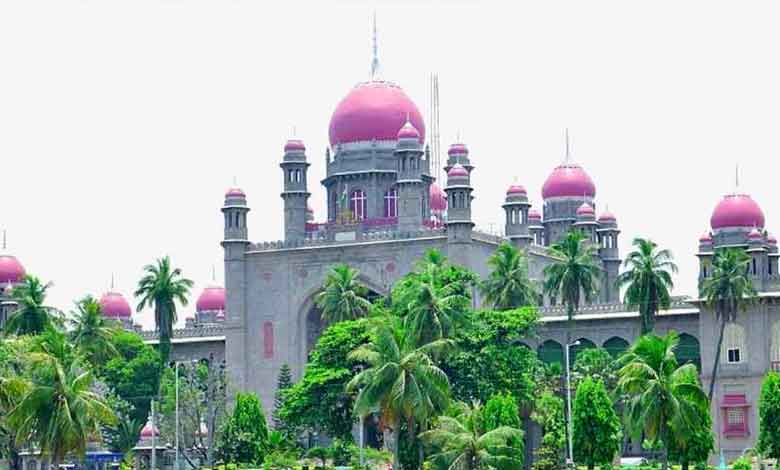Telangana High Court Pushes for Musi River front Revival: Orders Encroachment Removal
Telangana High Court Pushes for Musi River front Revival of unauthorized structures from Musi River’s Full Tank Level and Riverbed Zone, boosting the Congress-led Musi Riverfront Development Project.

Telangana High Court Pushes for Musi River front Revival a significant boost to the ruling Congress in its ambitious Musi Riverfront Development Project. In a landmark judgment, the court directed state government agencies to take decisive steps to remove unauthorized structures in the Full Tank Level (FTL) and Riverbed Zone of the Musi River. This move is set to pave the way for restoring the river’s ecological balance while supporting urban development goals.
Key Highlights of the Court Order
- Removal of Encroachments: The court has mandated the removal of all unauthorized structures within the Musi River’s Full Tank Level and Riverbed Zone.
- Time-Bound Action: Authorities are required to carry out the demolition process within a specified timeline.
- Compliance with Supreme Court Guidelines: The Hyderabad Disaster Response and Asset Monitoring and Protection Agency (HYDRAA) and other relevant agencies must adhere to Supreme Court directives during the operation.
- Public Notices: Encroachers must be served notices before initiating the removal of unauthorized constructions.
Telangana High Court Pushes for Musi River front Revival A Boost for Musi Riverfront Development
The judgment aligns with the Congress-led government’s vision for transforming the Musi River into a vibrant, eco-friendly riverfront. The Musi Riverfront Development Project aims to:
- Revive the river’s ecological health by clearing debris and improving water quality.
- Create green spaces for public use, including parks, walkways, and recreational areas.
- Enhance urban aesthetics by beautifying the riverbanks.
This project is expected to significantly improve Hyderabad’s urban landscape while addressing pressing environmental concerns.
Background of the Case
The court’s decision came while disposing of multiple writ petitions filed by residents opposing the government’s demolition efforts. Petitioners claimed their houses were targeted without proper legal procedures. However, the court emphasized the importance of safeguarding the riverbed and maintaining urban planning regulations.
Court Directives to Government Agencies
- Strict Implementation: Authorities must ensure the removal of all unauthorized constructions within the FTL, Riverbed Zone, and Buffer Zone of the Musi River.
- Adherence to Legal Procedures:
- Notices must be issued to encroachers as per Supreme Court guidelines.
- Adequate time must be provided for the affected individuals to respond.
- Collaboration Among Agencies: HYDRAA and other state agencies must coordinate their efforts to ensure seamless execution.
Challenges Ahead
While the court’s directives mark a positive step forward, implementing the judgment poses several challenges:
- Relocation of Encroachers: Identifying suitable alternatives for displaced individuals remains a critical issue.
- Resistance from Residents: Encroachers may oppose demolition efforts, leading to potential delays.
- Environmental Concerns: Care must be taken to minimize environmental damage during the removal process.
The Importance of the Musi Riverfront Development
The Musi River, once the lifeline of Hyderabad, has suffered decades of neglect, leading to:
- Pollution from untreated sewage and industrial waste.
- Encroachments reducing the river’s capacity and exacerbating flood risks.
- Loss of biodiversity in and around the river.
The Musi Riverfront Development Project seeks to reverse this degradation by combining sustainable urban planning with environmental conservation.
Public Response and Political Implications
The High Court’s judgment is likely to bolster public confidence in the government’s ability to deliver on its promises of development. For the Congress-led administration, this victory strengthens its position as a pro-development force in Telangana.
However, political analysts point out that successful implementation is critical to maintaining this momentum. Failure to address the concerns of displaced residents or delays in execution could dampen public support.
What’s Next?
With the High Court’s order, government agencies have been given the green light to initiate encroachment removal. Key steps in the coming months include:
- Surveying and Demarcation: Identifying unauthorized structures in the FTL and Riverbed Zone.
- Issuance of Notices: Informing encroachers about the demolition plan and their rights.
- Execution of Removal: Demolishing illegal structures while ensuring minimal disruption.
- Public Engagement: Keeping citizens informed about the progress of the project and addressing their concerns.
Conclusion
The Telangana High Court’s directive marks a turning point for the Musi Riverfront Development Project. By ensuring the removal of encroachments, the ruling Congress can move closer to realizing its vision of a sustainable and scenic riverfront for Hyderabad. However, the road ahead demands meticulous planning, efficient execution, and a people-centric approach to address the challenges that lie ahead.
